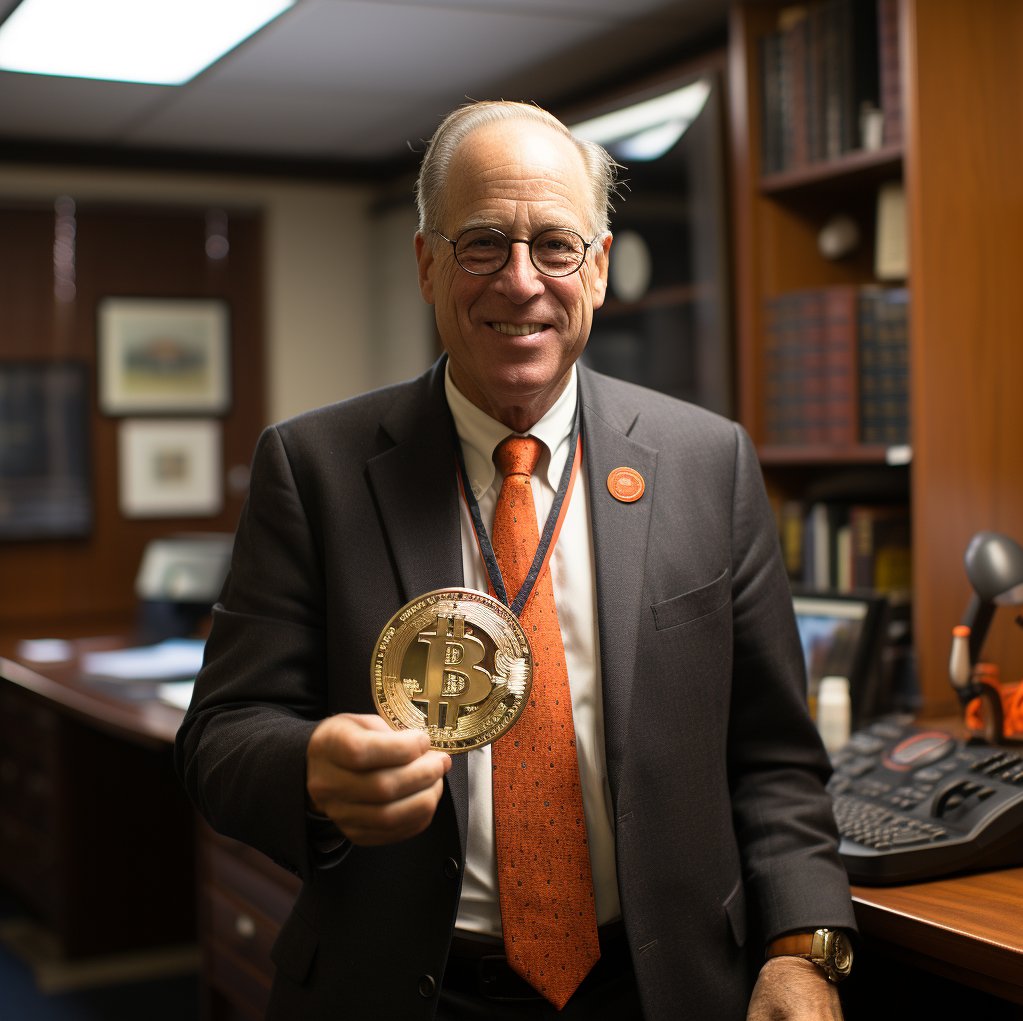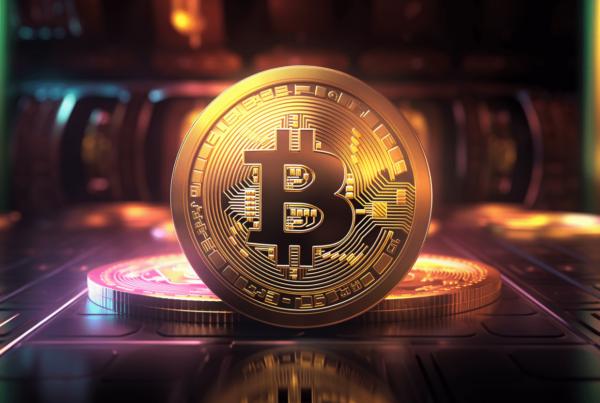
A weekly recap of the largest crypto events and narratives, with an extra dose of insight.
Here’s what we have for you:
- Larry Fink goes full pro-crypto
- RWAs continue growing
- Binance executives leave
- Grayscale DeFi adds LDO
- Blur V2
- Multichain hack

Larry Fink is not even priced in

Larry Fink is on prime-time television. Hot off the press, we have this man to thank for the recent run of Bitcoin to yearly highs. We’ve lovingly named this, the Fink bid. On Thursday, Fink appeared on Fox Business to talk about crypto and a few other things. He said that when he first learned about crypto, he basically thought that it was mainly used for illegal activity, which was kinda the truth at that time. But now, Fink has finally come to his senses, and he is here to buy our bags.
One quote that came from the interview was “Bitcoin is a hedge against the devaluation of your currency.” We all know one of the core value propositions of Bitcoin is its fixed supply of 21M. Fink also said “crypto is digitising gold”, which has been another popular narrative around Bitcoin. But one thing that Fink said was that BlackRock’s Bitcoin ETF could help make crypto “more democratised.” And you know what is one thing the Americans love, their freedom and democracy.
I’ve here to provide some opinion, and more than enough opinion has been offered about shared surveillance agreements, Coinbase, and the SEC. Here’s my take. The market hasn’t even begun to price in the possibility of a spot Bitcoin approval. Here’s why. A spot ETF approval is a yes or no thing. You’re not going to get the SEC teasing us along the way going, ohh we’re leaning towards yes at the moment but we’re still making our decision. That’s not how this works. And so, what everyone is pricing right now is a probability, what is the probability of an ETF getting approved and what would the price of Bitcoin be if that ETF gets approved, and what is the probability of an ETF not getting approved and what should the price of Bitcoin be if that happens. Well, if a spot Bitcoin ETF gets approved, suddenly the probability for the former skyrockets to 100%. And now the expected price is 100% times whatever the price everyone thought Bitcoin should be if the ETF got approved. And there is one thing I can guarantee, if and when the SEC approves the ETF, the market will be absolutely euphoric and never look back.

RWAs not stopping

I know RWAs seem like a bit of a meme, but there are many protocols doing good work in bringing them onchain. There are now a handful of protocols, including Ondo, Matrixdock, Maple Finance, and more that all bring US treasury yields onchain, with the total standing at $267M with a 25% 30-day growth. Don’t forget Superstate, a new protocol committing to “building the future of compliant, blockchain-based financial products”, led by ex-Compound CEO, Robert Leshner. DeFi lending markets are still relatively inefficient today. For much of 2023, DeFi yields have been lower than US treasury yield, which doesn’t really make sense if you believe in the risk premium. Bringing treasury yields onchain is one way of bridging that gap and making our DeFi markets more efficient, both natively, and compared to the “outside world”.
As much as we crypto advocates would wish for a fully decentralised financial system, a large component of DeFi will be in the form of bringing off-chain assets onchain. And yes, if that happens, it will likely require centralised custodians to hold those assets, but at the bare minimum, it will increase the access of these financial products to the global population. Imagine you live in a developing nation with high inflation, and you get to park your savings into liquid US treasuries onchain. Sounds like a good deal to me.

Binance loses executives

-
Remember when Brett Harrison, President of FTX.US and Sam Trabucco, Head of Alameda, stepped down a few months before FTX’s collapse. I do. The PTSD is still a little fresh in the mind for me, and perhaps for all of you too.
-
Well, the exact same thing is happening at Binance. Its general counsel, chief strategy officer, and senior vice president for compliance all left the firm last week. Reasons cited including “personal reasons” and “simply tired”. Perhaps CZ’s 4 stands for the number of jurisdictions Binance is still allowed to operate in by the end of the year.
Grayscale’s DeFi fund adds LDO
-
Everyone knows about Grayscale’s GBTC trust. With $18.9B assets under management (AUM), it is one of crypto’s largest “funds”. Oh btw, if you weren’t following, the GBTC discount has absolutely ripped off the lows of 48% from half a year ago to 27.5% today.
-
Anyways, Grayscale has a much smaller DeFi fund, with only $3M in AUM. In a surprise move, Grayscale made LDO the second largest holding of the fund, it wasn’t even included in the fund before. Perhaps this is a sign for things to come when TradFi eventually enters.
Blur v2

-
Blur, the most dominant NFT marketplace by a wide margin recently announced its V2. Amongst the upgrades, trades will now use 50% less gas and you can now bid on individual traits instead of entire collections.
-
As part of season 2, you can now earn more points by trait bidding on collections. Interestingly, gas optimization has become a bit of a trend lately, with exchanges such as Curve and Uniswap all adopting new architectures to optimise gas spending.


On Thursday, Multichain got hacked. What started off with someone draining all the tokens on Fantom eventually spread to the entire Multichain protocol, with a total of $130M drained. This was confirmed by Multichain in a tweet, stating that all lockup assets on the Multichain MPC address have been moved to an unknown address abnormally. As of today, the entire Multichain service has stopped and all bridge transactions will be stuck on their source chains. This comes hot on the heels of reports in early June that Multichain’s CEO was missing and that the team was detained in China. To be honest, if the June story and the interruption of the cross-chain service weren’t enough to get you to pull funds out of Multichain, I’m not sure what would have been.
Bridges are notorious for getting hacked. Since the beginning of DeFi, more than $2B has been lost to bridge hacks, with the most notable ones being Ronin Network for $624M, Poly Network for $611M, and BNB Bridge for $586M. What makes bridges so susceptible to hacks? Simple, they have many more attack vectors and more complicated security models. But fascinatingly, many of the largest bridge hacks weren’t due to these reasons. They were simply due to teams getting social engineered, and the fact that many of these bridges can still be controlled using a multi-sig wallet.
So, unfortunately, one evaluating factor for bridges is, who do you trust more? Even though the whole point of this crypto thing was that we shouldn’t have to trust anyone. One future that may lie ahead of us is token issuers themselves being the bridge. In this case, the token issuer has full control over the bridge, can control/freeze exploited funds if they wanted to, and can mint to compensate users. For example, Circle and Tether helped to freeze over $65M as part of this hack, so why doesn’t Circle just be the bridge? That’s exactly what they’re doing with the Cross-Chain Transfer Protocol which allows anyone to permissionlessly bridge USDC across supported networks. Long live bridges run by centralised token issuers?
Did you like this edition? Let us know what you think by replying to this email.
Give us a follow on twitter @rektradar.




